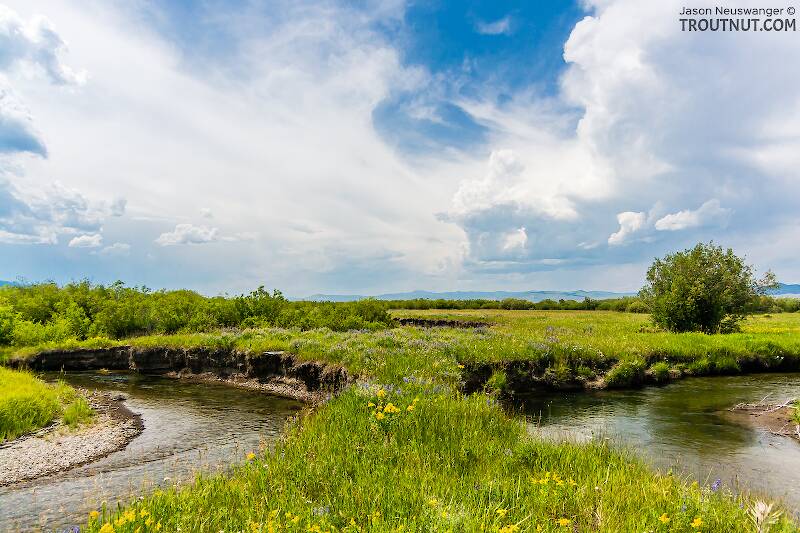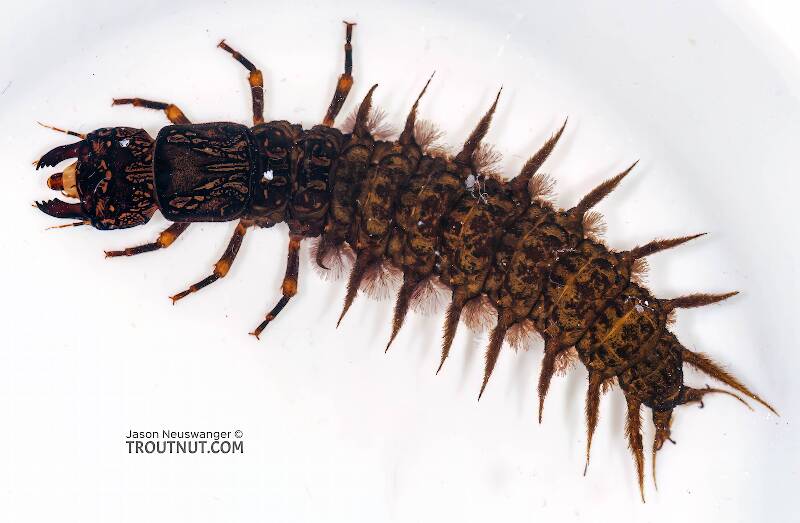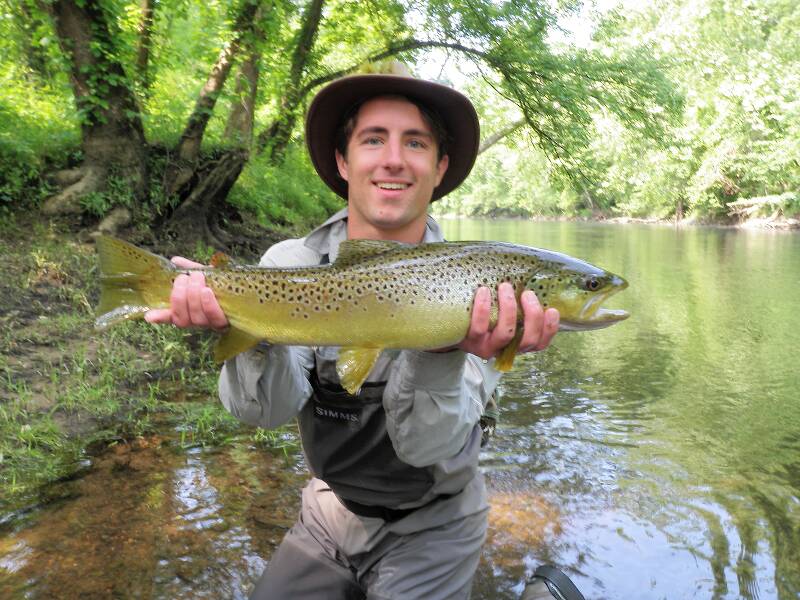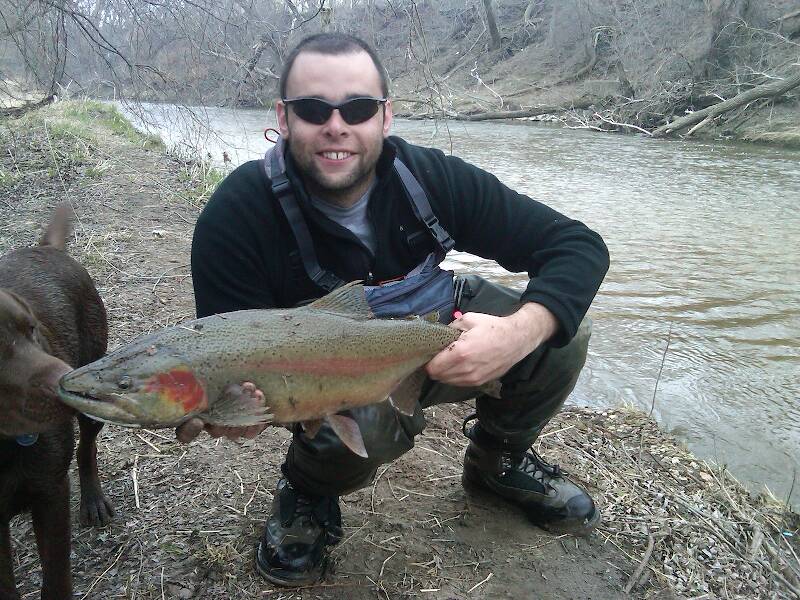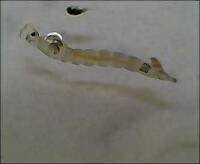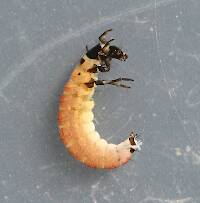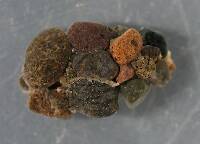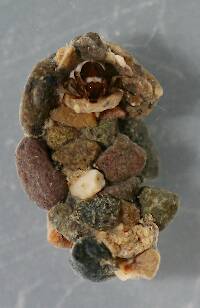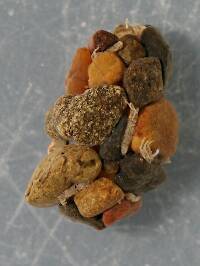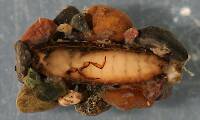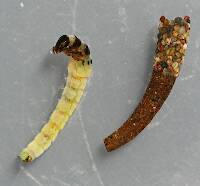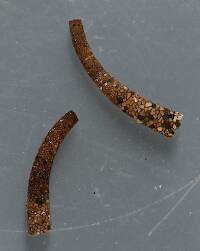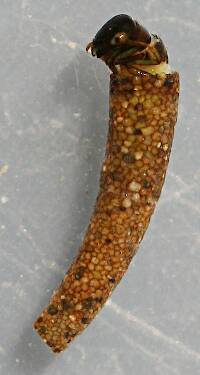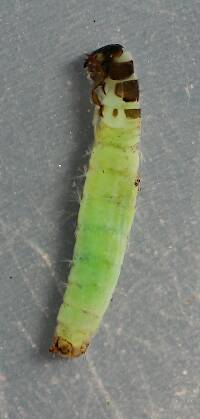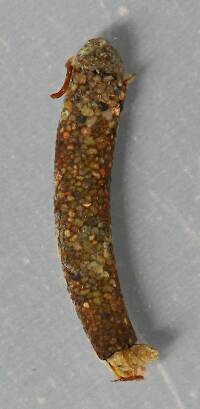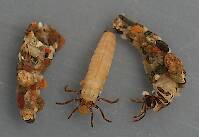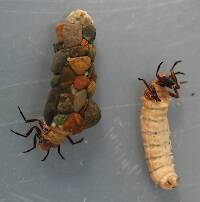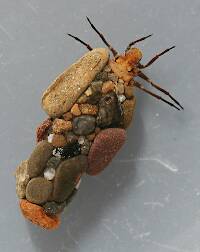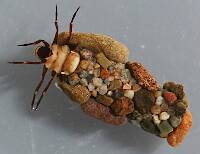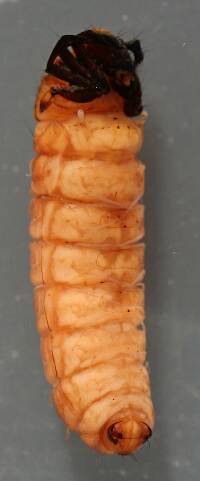
Hex Mayflies
Hexagenia limbata
The famous nocturnal Hex hatch of the Midwest (and a few other lucky locations) stirs to the surface mythically large brown trout that only touch streamers for the rest of the year.
Featured on the forum

This dun emerged from a mature nymph on my desk. Unfortunately its wings didn't perfectly dry out.

Troutnut is a project started in 2003 by salmonid ecologist Jason "Troutnut" Neuswanger to help anglers and
fly tyers unabashedly embrace the entomological side of the sport. Learn more about Troutnut or
support the project for an enhanced experience here.
This topic is about the Hellgrammite Genus Corydalus
The largest and most well-known hellgrammites belong to this genus, although in my collecting experiences the fishflies of Nigronia seem to be more common in trout streams.Example specimen
Jesse on Jun 28, 2011June 28th, 2011, 8:14 pm EDT
Nice touch Jason we could go with that on the forum ha!
Most of us fish our whole lives..not knowing its not the fish that we are after.
http://www.filingoflyfishing.com
http://www.filingoflyfishing.com
Kschaefer3 on Sep 11, 2013September 11th, 2013, 10:51 am EDT
I love this pattern! I looked this thread up so I could get another look. I imagine these would be killer on spring creeks in MN and WI.
Paul - What size hook do you use on these? I'm sure there is a range, just curious what size to start with. I'm thinking about hanging one of these in a deep pool this winter to see what will come play.
Paul - What size hook do you use on these? I'm sure there is a range, just curious what size to start with. I'm thinking about hanging one of these in a deep pool this winter to see what will come play.
PaulRoberts on Sep 11, 2013September 11th, 2013, 4:42 pm EDT
Kyle, I used a #6 (I think), 37140 Mustad. These are "wide-gap" ("Kahle" style) hooks, and are bigger than the number would lead you to believe. The #6 makes a ~#4 sized fly, after you've straightened out the shank some (as previously mentioned).
Fun thread actually. Some fun banter there.
Fun thread actually. Some fun banter there.
Kschaefer3 on Sep 12, 2013September 12th, 2013, 6:52 am EDT
Yes it is a great thread in general! Thinking about Jesse's original intent has me interested too. Oh well, save that for another day...or night, I guess.
Thanks for getting back to me on the hook size. Would you mind explaining how you bend the hook? I can see the fly in the post, so I'll likely just try to imitate that. Also, do you have any insight on the range of hellgrammites? Are they distributed around the country?
Thanks for getting back to me on the hook size. Would you mind explaining how you bend the hook? I can see the fly in the post, so I'll likely just try to imitate that. Also, do you have any insight on the range of hellgrammites? Are they distributed around the country?
Taxon on Sep 12, 2013September 12th, 2013, 8:42 am EDT
Kyle-
Dobsonflies are found in most states except in the Pacific Northwest, and Fishflies are found in most states except those high elevation states in the Continental Divide.
Also, do you have any insight on the range of hellgrammites? Are they distributed around the country?
Dobsonflies are found in most states except in the Pacific Northwest, and Fishflies are found in most states except those high elevation states in the Continental Divide.
Kschaefer3 on Sep 12, 2013September 12th, 2013, 10:38 am EDT
Thanks, Taxon!
PaulRoberts on Sep 12, 2013September 12th, 2013, 4:26 pm EDT
Find stonefly water down the watershed a ways and start rolling large rock.
Alderfly larvae can be found higher up the watershed and like depositional habitat -pool and eddy basins with collected silt and FPOM (Fine Particulate Organic Matter)/detritus (wood/leaf bits).
The 37140 has a reverse bend and is deeply gapped that's somewhat closed. Use small pointed pliers. I start by straightening out the reverse, aligning the point with the shank (view it from the top). Then I straighten the shank, first laterally as the reverse continues up the shank half way. I then open the gap some by straightening the shank vertically, smoothing the curve (see pic for final shape).
You'll likely see the 37160 in fly-tying catalogs but it has an upturned eye which is not ideal for this fly. I have bent those eyes straight for some flies, but that is a steep bend and puts the wire at risk for big fish. Not all boxes of 37160's can have their eyes straightened as tempers vary across lots. There is better steel out there now and the 371XX series uses the older steel apparently.
In general, I try not to bend and re-bend the wire as I work so as not to weaken it. It's a strong design though and I've had no issues; even catching steelhead up to 15lbs on these hooks. There are lots of hooks out there now though with a similar bend (Kahle like) and high grade steel (some Japanese brands) but you'll need to look beyond the fly-tying world.
Alderfly larvae can be found higher up the watershed and like depositional habitat -pool and eddy basins with collected silt and FPOM (Fine Particulate Organic Matter)/detritus (wood/leaf bits).
The 37140 has a reverse bend and is deeply gapped that's somewhat closed. Use small pointed pliers. I start by straightening out the reverse, aligning the point with the shank (view it from the top). Then I straighten the shank, first laterally as the reverse continues up the shank half way. I then open the gap some by straightening the shank vertically, smoothing the curve (see pic for final shape).
You'll likely see the 37160 in fly-tying catalogs but it has an upturned eye which is not ideal for this fly. I have bent those eyes straight for some flies, but that is a steep bend and puts the wire at risk for big fish. Not all boxes of 37160's can have their eyes straightened as tempers vary across lots. There is better steel out there now and the 371XX series uses the older steel apparently.
In general, I try not to bend and re-bend the wire as I work so as not to weaken it. It's a strong design though and I've had no issues; even catching steelhead up to 15lbs on these hooks. There are lots of hooks out there now though with a similar bend (Kahle like) and high grade steel (some Japanese brands) but you'll need to look beyond the fly-tying world.
Quick Reply
Related Discussions
Topic
Replies
Last Reply
5
Jun 28, 2011
by PaulRoberts
by PaulRoberts
2
Apr 7, 2012
by Crepuscular
by Crepuscular
4
Oct 29, 2014
by Millcreek
by Millcreek
16
May 20, 2008
by Shawnny3
by Shawnny3

